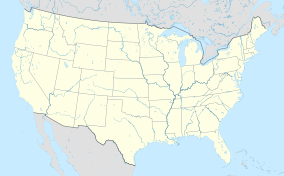Medicine Lake National Wildlife Refuge facts for kids
Quick facts for kids Medicine Lake National Wildlife Refuge |
|
|---|---|
|
IUCN Category IV (Habitat/Species Management Area)
|
|
| Location | Sheridan County and Roosevelt County, Montana, United States |
| Nearest city | Glendive, MT |
| Area | 31,533 acres (12,761 ha) |
| Established | 1935 |
| Governing body | U.S. Fish and Wildlife Service |
| Website | Medicine Lake National Wildlife Refuge |
Medicine Lake National Wildlife Refuge is a huge protected area in northeastern Montana, USA. It covers about 31,533 acres, which is like 24,000 football fields! This special place is part of a larger group called the Medicine Lake National Wildlife Refuge Complex. It also includes the Northeast Montana Wetland Management District and Lamesteer National Wildlife Refuge.
The name "Medicine Lake" comes from the Assiniboine language. The Assiniboine people called the lake "Bda wauka," which means "medicine water." The refuge was created in 1935. Its main job is to protect homes for many different animals, especially birds that travel long distances. The United States Fish and Wildlife Service manages the refuge. This is a government agency that helps protect nature. In 1980, the Medicine Lake area was named a National Natural Landmark. This means it's a very important natural site in the country.
Contents
Amazing Animals at Medicine Lake
Medicine Lake National Wildlife Refuge is a fantastic place for wildlife! Scientists have found 283 different kinds of birds here. Out of these, 125 types of birds actually build their nests and raise their babies on the refuge.
Birds: From Pelicans to Cranes
One of the most amazing sights is the huge group of American white pelicans. Medicine Lake has the fifth largest group of these birds in the world! About 4,000 pairs of pelicans come here to have their chicks.
In 2003, something very rare happened. A whooping crane was seen and photographed at the refuge. This was the first time this endangered bird was ever officially seen in Montana! There are only about 300 whooping cranes left in the entire world, so this was a very special moment.
The refuge is home to one endangered bird species and two threatened bird species. Endangered means they are in danger of disappearing forever. Threatened means they might become endangered soon. The refuge helps protect these special birds.
Mammals: From Bears to Moose
It's not just birds that live here! Many cool mammals also call Medicine Lake home. You might see a black bear or a wolverine. There are also large animals like moose and mule deer. Smaller animals like bobcats and pronghorn also live in the refuge. Sometimes, even caribou can be found here!
Protecting the Land: Wilderness Area
Inside the Medicine Lake National Wildlife Refuge, there's an even more protected area. It's called the Medicine Lake Wilderness. This wilderness area was created in 1976. It covers about 11,366 acres.
What is a Wilderness Area?
A wilderness area is a place where nature is kept as wild as possible. It's meant to be untouched by humans. This gives the animals and plants a safe place to live without much disturbance. It helps protect the most remote parts of the refuge.


